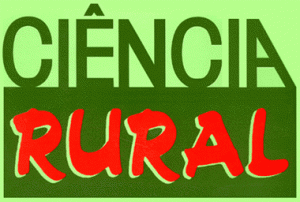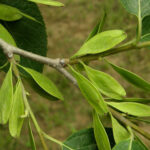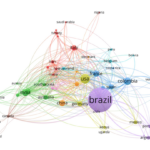Ana Paula Ferreira de Souza, researcher from the Analytical Chemistry Division / CPQBA, Universidade Estadual de Campinas (UNICAMP). Campinas, São Paulo, Brazil.
Maria Luiza De Grandi, journalist of Ciência Rural. Santa Maria, Rio Grande do Sul, Brazil.
Nadia Regina Rodrigues, researcher from the Analytical Chemistry Division / CPQBA, Universidade Estadual de Campinas (UNICAMP). Campinas, São Paulo, Brazil.
 Started in 1996, the cultivation of genetically modified foods is a global trend. These products, derived from biotechnology, totaled 2.3 billion hectares in cumulative planted area in the world and in the period between 1996 and 2016, genetically modified crops were implemented by more than 18 million farmers. Data show that in 2017, 24 countries planted genetically modified crops, 19 of which are emerging countries. In the same year, genetically modified crops grown in the world grew 3% and totaled approximately 190 million hectares (ISAAA, 2017). Within this context, the use of herbicides such as glyphosate is common, as it is capable of controlling a great diversity of weeds, however, its management can lead to the occurrence of residues.
Started in 1996, the cultivation of genetically modified foods is a global trend. These products, derived from biotechnology, totaled 2.3 billion hectares in cumulative planted area in the world and in the period between 1996 and 2016, genetically modified crops were implemented by more than 18 million farmers. Data show that in 2017, 24 countries planted genetically modified crops, 19 of which are emerging countries. In the same year, genetically modified crops grown in the world grew 3% and totaled approximately 190 million hectares (ISAAA, 2017). Within this context, the use of herbicides such as glyphosate is common, as it is capable of controlling a great diversity of weeds, however, its management can lead to the occurrence of residues.
Researchers from the Crop Sciences Division of Bayer, in partnership with the Universidade Estadual de Campinas (UNICAMP), developed a study with the objective of myonitoring the levels of glyphosate residues and their main metabolite after different managements. The article “Glphosate and aminomethylphosphonic acid (AMPA) residues in glyphosate-tolerant soybean, corn and cotton crops” was published in the Ciência Rural (vol. 51, nº 1).
For the research, sampling of soybeans and corn and cotton seeds were carried out in commercial areas in the 2012/2013 to 2017/2018 harvests, in different Brazilian agricultural regions. The levels of glyphosate residues in genetically modified corn compared to unmodified, ranged from undetected (ND) to 0.15 mg kg-1. In genetically modified compared to unmodified soybeans, they ranged from DN to 2.81 mg kg-1 and in genetically modified cotton compared to unmodified, the results were established between ND to 1.78 mg kg-1.
According to the researcher from UNICAMP who was part of the research development team, Dr. Nadia Rodrigues, these results corroborate other results of studies carried out for the purpose of registering formulations to be used on genetically modified crops. “The results confirm that the regulatory agency’s assessment is judicious in the sense of releasing formulations with a safety profile for applicators and consumers and establishing MRLs (maximum residue limits) that are not only safe, but also realistic,” she explains.
The research also contributes by giving scientific support to discussions about the safety of the glyphosate herbicide, such as, for example, the reevaluation of glyphosate at ANVISA. “These results demonstrate that, in the commercial areas, what is found is what is expected from scientific studies, that is, that the residues of the herbicide are within the established by ANVISA.”, Emphasizes Dra. Rodrigues. According to the researcher, the results in practice give greater robustness to the safety of this product when used on genetically modified crops that will be consumed by humans and animals, and also for the environment, since the profile of the herbicide remains the same.
References
Global Status of Commercialized Biotech/GM Crops: 2017 [online]. ISAAA. 2017 [viewed 16 June 2021]. Available from: https://www.isaaa.org/resources/publications/briefs/53/download/isaaa-brief-53-2017.pdf
To read the article, acess
RODRIGUES, N. R., et al. Resíduos de glifosato eácido aminometilfosfônico (AMPA) em culturas de soja, milho e algodão geneticamente modificados tolerantes ao glifosato. Ciência Rural [online]. 2021, vol. 51, no.01 [viewed 16 June 2021]. https://doi.org/10.1590/0103-8478cr20190244. Available from: http://ref.scielo.org/m6g8cm
External links
Ciência Rural – CR: https://www.scielo.br/cr
Ciência Rural: http://coral.ufsm.br/ccr/cienciarural/
Como citar este post [ISO 690/2010]:

















Recent Comments